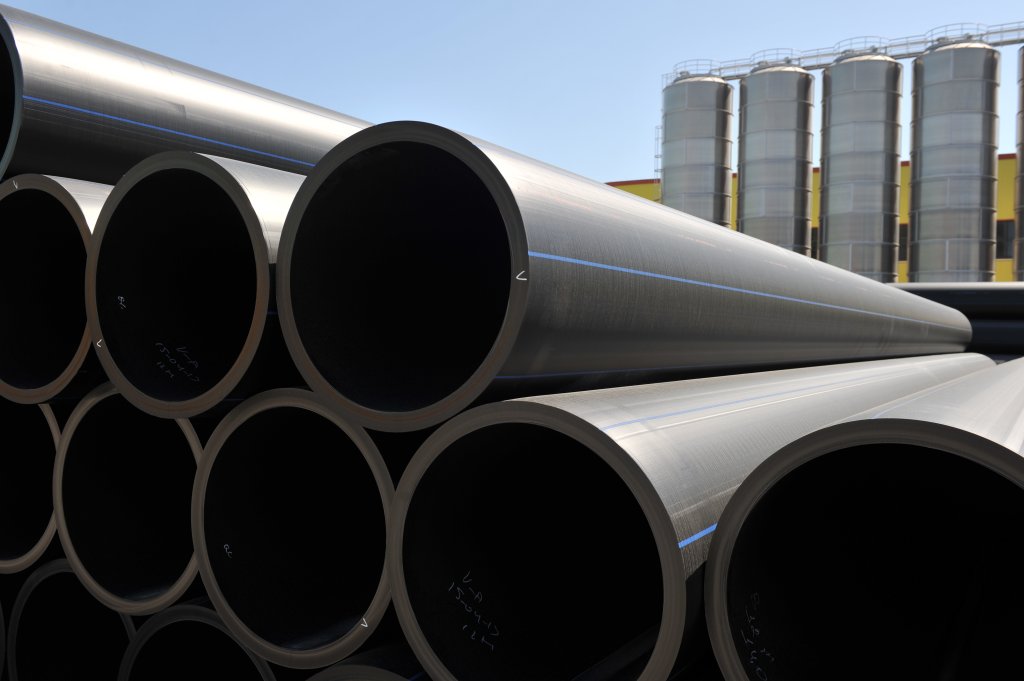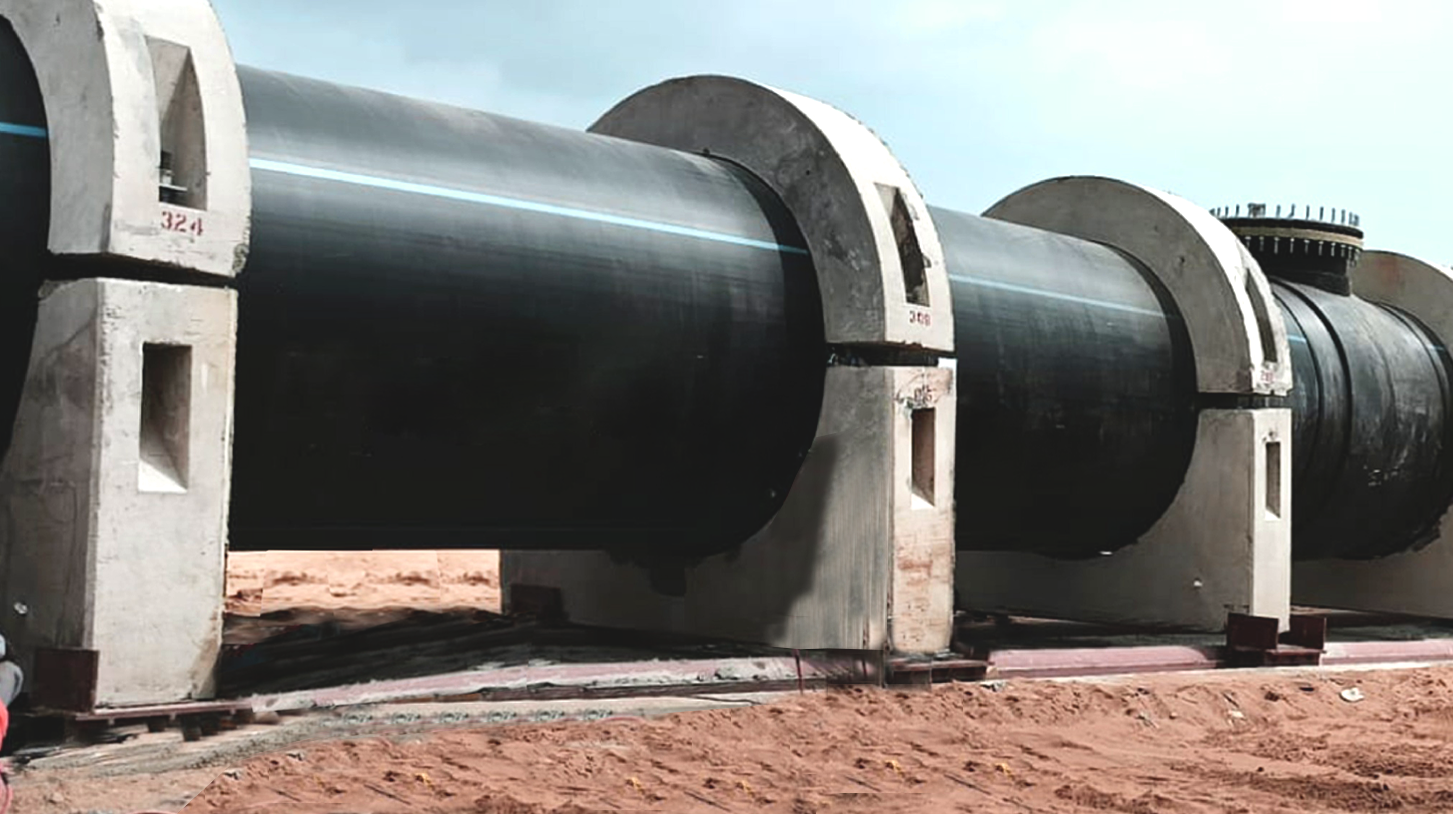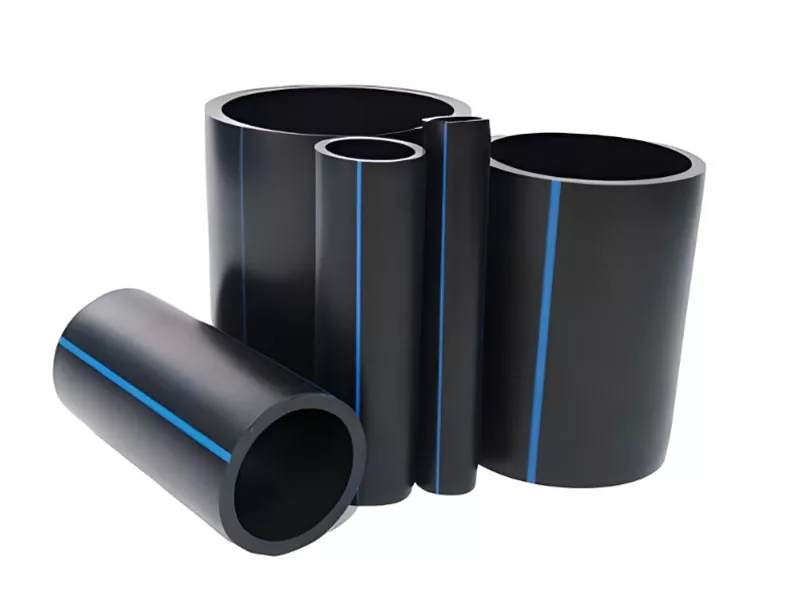Explore the Production Refine Behind High-Quality HDPE Pipe and Its Applications
The manufacturing procedure of top quality HDPE pipes is complex and methodical. It begins with the selection of resources that boost performance. Following this, ethylene undertakes polymerization to create material, which is after that formed via extrusion. Quality assurance is extremely important, making certain that the end product satisfies stringent standards. Nevertheless, the trip of HDPE pipelines doesn't end with production. Their applications throughout numerous sectors expose a broader relevance worth taking a look at.
Comprehending HDPE: Characteristics and Advantages

High-density polyethylene (HDPE) is a versatile thermoplastic known for its durability and resistance to various ecological variables. This product exhibits exceptional tensile toughness, making it ideal for requiring applications. Its low-density framework adds to a light-weight product, helping with simplicity of taking care of and setup. HDPE additionally showcases amazing resistance to chemicals, which reduces destruction when exposed to extreme materials.
The product's reduced moisture absorption better boosts its longevity, making it excellent for use in pipes and tank. Furthermore, HDPE is resistant to ultraviolet (UV) radiation, making certain that items preserve their honesty even when subjected to sunlight. Moreover, its versatility permits for the development of detailed forms without endangering toughness. The environmentally friendly nature of HDPE, often obtained from recycled materials, includes in its appeal, promoting sustainable practices in production. Generally, these residential properties and advantages make HDPE a recommended option for different industrial and consumer applications.
Resources Option for HDPE Manufacturing
The option of raw products for HDPE production is necessary to confirm the end product satisfies the desired specs and quality requirements. High-density polyethylene (HDPE) is mostly produced from polymerized ethylene, stemmed from nonrenewable fuel sources such as natural gas or petroleum. The top quality of these feedstocks considerably influences the mechanical and thermal residential properties of the final HDPE.
Ingredients likewise play a considerable role in enhancing HDPE's performance, consisting of antioxidants, UV stabilizers, and colorants, which boost longevity and resistance to ecological elements. The choice process have to take into consideration not just the chemical structure of the raw products yet likewise their handling features to ensure efficient manufacturing.
Additionally, the sourcing of raw materials need to focus on sustainability and compliance with environmental regulations, as responsible practices are necessary in today's market. Eventually, mindful raw material selection lays the structure for creating top notch HDPE pipelines suitable for varied applications.
The Extrusion Process: Shaping HDPE Pipe
The extrusion procedure plays a crucial duty fit HDPE pipes, beginning with precise material preparation methods that assure suitable circulation and consistency. Just as crucial is the design of the die, which straight influences the final measurements and surface top quality of the pipe. With each other, these factors add greatly to the efficiency and top quality of HDPE pipe manufacturing.
Material Prep Work Methods
Efficient manufacturing of HDPE pipes starts with precise product prep work methods, particularly the extrusion procedure. Throughout this stage, high-density polyethylene material is initial dried to remove wetness, guaranteeing perfect flow characteristics. The resin is after that fed right into the extruder, where it goes through home heating and melting, transforming right into a viscous state. This home heating process is very carefully controlled to keep the product's integrity and performance. The liquified HDPE is forced through a die, shaping it into a continual pipeline form. Appropriate temperature level administration throughout extrusion is essential, as it straight affects the product's buildings and the end product top quality. When formed, the HDPE pipe is cooled and cut to defined sizes, ready for succeeding handling and applications.
Die Style Importance
Precision in die design plays an important duty in the extrusion procedure of HDPE pipes. The die acts as the last shaping device, directly influencing the pipe's dimensions, wall thickness, and surface area coating. A well-designed die guarantees uniform product circulation, lowering defects such as irregularities and weak points. The geometry of the die must be enhanced to accommodate the specific properties of HDPE, including its thickness and thermal behavior throughout extrusion. Additionally, the cooling price of the material as it passes with the die can significantly impact the pipe's structural honesty. As a result, investing in sophisticated die technology is essential for manufacturers aiming to create high-grade HDPE pipelines that satisfy industry criteria and client expectations.
High Quality Control Procedures in HDPE Production
Although different factors influence the quality of HDPE pipe manufacturing, reliable quality assurance procedures are important to guarantee uniformity and integrity in the final item. Secret quality assurance practices consist of extensive product evaluation, verifying that the raw polyethylene satisfies well-known criteria for purity and density. During the extrusion process, criteria such as temperature level, pressure, and cooling time are carefully monitored to maintain dimensional accuracy and structural honesty
Additionally, post-production screening is vital; producers usually perform hydrostatic tests to assess the pipe's strength and resistance to stress. Visual inspections for surface issues additionally boost quality control. Accreditation from pertinent criteria companies, like ASTM or ISO, provides an additional layer of integrity. By executing these complete high quality control actions, producers can reduce issues, boost efficiency, and make certain that the HDPE pipes fulfill the particular needs of numerous applications, eventually causing consumer contentment and rely on the item.
Applications of HDPE Pipeline Across Industries
HDPE pipes are used across numerous markets as a result of their durability and versatility. In water circulation systems, they ensure efficient delivery, while in wastewater management, they supply reliable services for waste transport. Additionally, agricultural watering networks gain from HDPE's resistance to corrosion and versatility, making it a perfect choice for contemporary farming techniques.

Water Distribution Solutions
A more info substantial number of markets depend on high-density polyethylene (HDPE) pipelines for effective water circulation systems. Recognized for their toughness and resistance to corrosion, HDPE pipelines are commonly made use of in municipal water supply networks, farming irrigation, and commercial applications. Their lightweight nature facilitates easy handling and installation, reducing labor costs and time. In addition, HDPE pipelines can fit numerous pressure levels, making them appropriate for both reduced and high-pressure systems. Texas hdpe pipe manufacturer. The versatility of the material permits for smooth integration into existing facilities, minimizing the need for comprehensive excavation. Additionally, HDPE's resistance to chemical leaching warranties that the water delivered stays safe and tidy, making it a suitable choice for preserving the top quality of potable water across numerous sectors
Wastewater Monitoring Solutions
Efficient water circulation systems likewise pave the way for cutting-edge wastewater monitoring services, where high-density polyethylene (HDPE) pipes play a considerable role. Renowned for their longevity and resistance to rust, HDPE pipes are ideal for carrying wastewater in various settings. Their flexibility permits for very easy installment in complex atmospheres, reducing the requirement for extensive excavation. Furthermore, HDPE's smooth interior surface area reduces rubbing, enhancing circulation prices and efficiency. These pipelines are also resistant to chemical leaching, making sure that impurities do not jeopardize the surrounding setting. Industries, municipalities, and treatment centers increasingly depend on HDPE pipes for their reliability and durability, making them a preferred selection for modern wastewater management systems. This adaptability emphasizes the important relevance of HDPE pipes across various applications.
Agricultural Irrigation Networks
Agricultural irrigation networks profit greatly from the usage of high-density polyethylene (HDPE) pipes, which provide effective and trustworthy water distribution to plants. HDPE pipelines are light-weight, making them simple to carry and install, while their flexibility permits for different setups in varied terrains. These pipelines show outstanding resistance to corrosion, chemicals, and UV radiation, making certain toughness in rough agricultural atmospheres. Additionally, their smooth interior surface area decreases rubbing loss, maximizing water circulation and lowering energy prices related to pumping. The durability of HDPE pipelines, frequently going beyond half a century, contributes to lower maintenance and substitute expenses. Farmers increasingly depend on HDPE pipes to improve irrigation effectiveness and promote lasting farming practices, inevitably leading to enhanced plant yields and resource preservation.

Future Patterns in HDPE Pipe Innovation
As the need for sustainable and reliable infrastructure grows, innovations in HDPE pipe modern technology are poised to change numerous markets. Emerging patterns consist of the integration of smart modern technologies, such as sensing units and IoT abilities, which assist in real-time surveillance of pipeline problems, decreasing maintenance expenses and protecting against leaks. In addition, the development of sophisticated production methods, such as 3D printing, is enabling the manufacturing of complicated, customized pipe designs that deal with particular task needs.
Additionally, the focus on recycling and circular economic climate methods is driving the technology of HDPE pipes made from recycled products, boosting sustainability. Improved jointing techniques, such as electro-fusion and mechanical fittings, are additionally enhancing setup effectiveness and dependability. The expanding emphasis on environmental policies is pushing makers to adopt greener production procedures, guaranteeing that HDPE pipes not only fulfill industry requirements however additionally cultivate a more lasting future for facilities advancement.
Often Asked Questions
How Does HDPE Contrast to Various Other Plastic Products?
HDPE outshines many other plastic products relating to longevity, chemical resistance, and versatility. Its reduced density and high tensile toughness make it excellent for numerous applications, frequently going beyond alternatives in both efficiency and longevity.
What Are the Ecological Impacts of HDPE Production?
The environmental impacts of HDPE production include greenhouse gas exhausts, power intake, and prospective pollution from making procedures. In addition, inappropriate disposal can bring about soil and water contamination, elevating concerns about lasting eco-friendly effects.
Can HDPE Piping Be Reused?
Yes, HDPE pipelines can be recycled. Lots of facilities accept utilized HDPE for processing, changing it into brand-new products. This reusing contributes to sustainability initiatives, decreasing plastic waste while saving resources and energy in the production cycle.
What Is the Life Expectancy of HDPE Pipes?

How Do Temperature Variants Affect HDPE Pipe Efficiency?
Temperature level variants significantly affect HDPE pipe performance, affecting flexibility and strength. Heats can bring about softening, while reduced temperature levels might create brittleness, eventually affecting the pipe's longevity and viability for numerous applications in varied atmospheres.